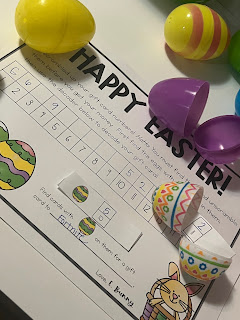I am always telling my students, “The only way you get better at reading is READING!”
It’s true. Beginning readers need LOTS of practice reading. Sounds easy right? Just give them some books, and time to read. Unfortunately, when something isn’t easy for you it is hard to stay motivated to do it. Most struggling readers do not enjoy independent reading…YET.
Which is WHY I encourage you to try using READING INCENTIVES in your classroom. Start with something little like a sticker chart, a graph to color in, or a reading log. The SECRET to incentives is to know when they are no longer an incentive and change it up. That's why it is good to have lots of ideas up your sleeve.
After the other motivators have worn off, like maybe after winter break, it’s time to bump it up a notch with…
READ FOR BEADS!
The middle of the year is the perfect time to give this a try. Your routines and expectations are in place and students should be able to handle something new.
What you need:
Beads
Bead Organizer
Pipe Cleaners
Optional: Key chain rings and string.
Sort the beads into three levels of EXCITEMENT. Have simple beads that students get for reading one book, a little bit more special beads to earn after 5 books are read, and some really COOL beads for when they get to 10 books. After each book is read the student gets a bead and puts it on their pipe cleaner. Pipe cleaners are the perfect thing to use because the beads will not slide off and stay put. Even the beads with super small holes will still fit on. After the pipe cleaner is full, they can wear it like a bracelet, put the beads on a string for a necklace, or add a key chain ring to it and hang it on their book bag!
Reading incentives are a great way to keep students on task and motivated. Give them a try in your classroom! If you want to get the Read for Bead banner, reading log, and labels for the beads for FREE just CLICK HERE.


.png)







.jpg)
























